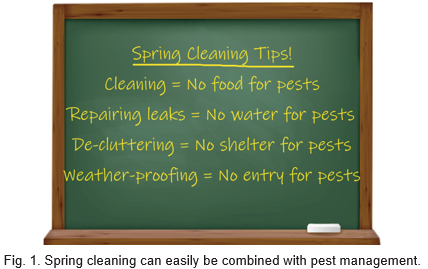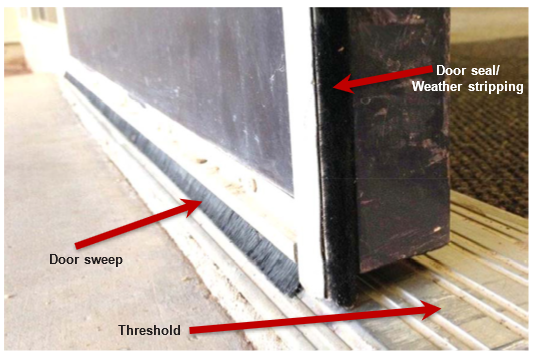Tips on how to prepare your pest management this spring.
View as PDF
View this email on our site
Subscribe to this newsletter

Please consider distributing this newsletter within the state of Arizona. If you work in education please let us know if you send this on to anyone in the following groups: school staff, faculty, students, and/or parents and guardians.
Spring Cleaning for Pest Management
Shaku Nair and Shujuan (Lucy) Li
University of Arizona
Cold days are ending soon! As you begin preparing for warmer temperatures in the coming months, it is good to keep in mind that pests will be doing the same. Spring cleaning is a great practice: being proactive about pests and preventing them before they occur! Pest management is not an additional thing on your to-do list. Just do what you do, but think “pests” (Fig. 1).
Connect with Safer Choice for your Spring Cleaning needs
What is Safer Choice? Safer Choice is the US EPA’s label for safer chemical-based products. Every chemical, regardless of percentage, in a Safer Choice-labeled product is evaluated through EPA’s rigorous scientific process and only the safest ingredients are allowed. For over 15 years, the program has labeled products that are safer for families, pets, workplaces, neighborhoods, and the environment. Read more about Safer Choice here
https://www.epa.gov/saferchoice. Safer Choice has a number of
fact sheets that provide information and guidance on the Safer Choice program for consumers, as well as resources for schools, communities and municipalities, and manufacturers. You can also download shareable infographics (see below) from Safer Choice (Figs. 2 and 3)
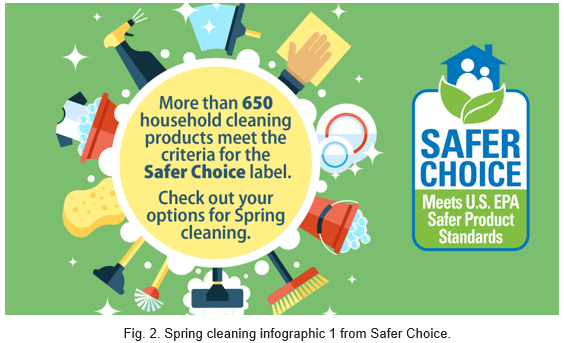
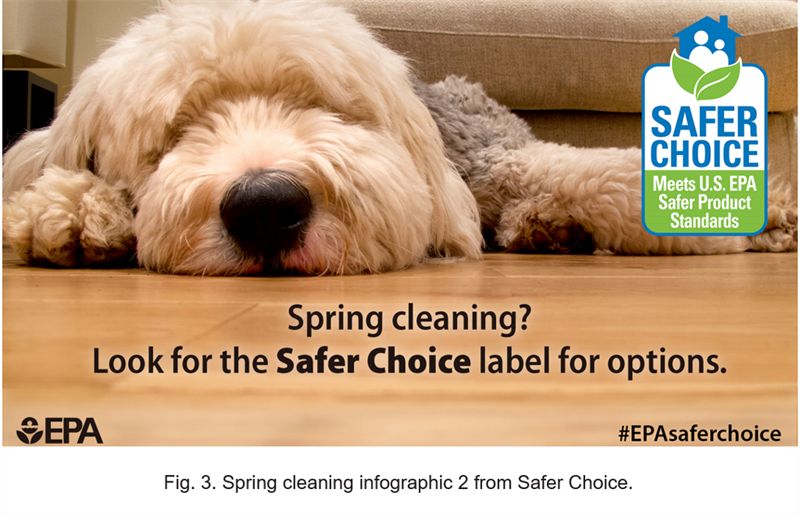
Spring cleaning and pest-proofing
Insects and other arthropods such as spiders, as well as rodent pests remain dormant during winter. With warmer temperature, they will become active and you may start seeing more ants, flies, and stinging insects. Some of these are not merely annoying, they can be potential health risks for you and your family. Here are some tips to keep in mind while you undertake spring cleaning projects, to keep pests at bay.
Indoors
- Door sweeps. Inspect or install door sweeps at the base of all exterior entry doors. Inspect and repair any damage to door thresholds. No outside light should be visible underneath exterior doors when viewed from the inside at floor level. The bottom of garage doors can be fitted with a brush or rubber seal (not vinyl as it performs poorly in cold weather). Sliding glass doors can be sealed by lining the bottom track with foam weather stripping.
- Door seals. Be sure to inspect all seals of doors including the tops and sides. This is especially important for double doors that lack a central vertical support. See Fig. 4 below, showing door sweeps, thresholds and door seals.
Fig. 4. Exterior door of a building showing a brush door sweep, door seal/ weather stripping and threshold. Ensuring that these are in good condition is one of the first steps in pest-proofing.
- Screens. Inspect, install or repair screens (20 mesh) on all doors or windows that can be opened, and on all ventilation openings. Keep screens in good condition and promptly repair tears or loose edges. This stops the entry of many pests. Periodically clean the space between the window and the screen to discourage scavenger insects, such as dermestid beetles from breeding and feeding in the organic matter accumulating in these areas.
- Fill cracks. To exclude rodents, lizards and insects, look for cracks/gaps around windows, doors and in fascia boards. For small cracks, use good-quality silicone sealant. Silicone lasts longer than latex caulking materials, as it expands and contracts more effectively with changing temperatures. For larger openings, fill with a strong material that matches the structure such as wood, cement, sheet rock or mortar.
- Utility openings. Seal all utility openings, including penetration points of pipes and wires, outdoor faucets, gas meters, and laundry vents. Cracks should be cleaned, and any peeling material removed. The hole can then be filled with a suitable sealant. Wider openings should be filled with copper mesh before sealants are applied. Check to make sure escutcheon plates are well seated around plumbing in bathrooms and kitchen (Fig. 5)
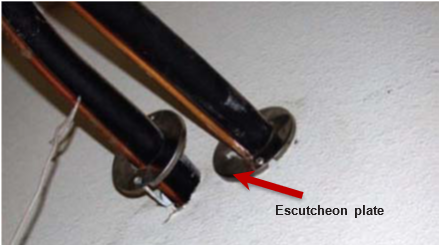
Fig. 5. Loose escutcheon plate revealing pipe entry-point in wall.
- Leaks. Inspect and repair plumbing and roof leaks regularly to reduce water availability to pests. Check ceiling tiles and the false floor under sinks, as a problem may not be apparent. Water damage can weaken walls and ceilings creating additional entryways and be a water source for mold to develop.
- Storage. Go through your cabinets and pantry. Discard any old or expired food materials, especially those that show signs of stored product pests. Wipe down or vacuum shelves and floors. Use airtight storage containers. This applies not only to human food items but also to pet foods. Most pantry pests can be kept away by using airtight containers. Food in other containers should be stored in the refrigerator or freezer.
- Cleaning and sanitation. Employ good cleaning procedures. Vacuum up all food crumbs. Promptly clean up spills. Do not let soiled dishes or containers sit out overnight. Clean under kitchen appliances as frequently as possible. Keep pet feeding dishes off the floor and clean them regularly.
- Waste disposal. Make sure trash is disposed properly and not accumulating. In schools and offices, employees often assume that one of their coworkers is going to take out the trash, but sometimes no one does. If there is no designated person, create a schedule so that everyone takes a turn. Trash containing food remains should be placed in sealable containers that pests such as mice and rats cannot get into.
- Pest-Vulnerable Areas (PVAs). Certain areas of a building, such as kitchens and bathrooms, are particularly suitable for pest populations to develop because food, warmth, and moisture are present. Take extra time to look for pest-conducive conditions and signs of pests (e.g., shed skins, excrement, sawdust) in these areas.
Outdoors
After you finish your indoor cleaning, conduct an inspection of your building perimeter, and look for any damage done over the winter months. Here are some tips for spring cleaning outdoors:
- General yard clean up. Encourage everyone to participate in yard clean up, including children. Remove accumulated landscape debris (Fig. 6), such as leaves and grass clippings from the yard and around the building foundation.
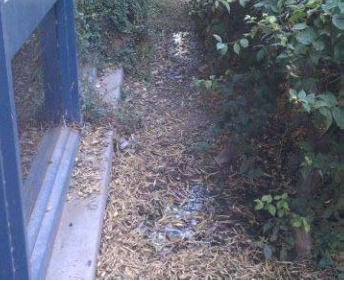
Fig. 6. Fallen leaves and other debris around the building provides harborage for pests and also holds moisture which can weaken the foundation.
- Landscape plants. Vines, shrubs and tree limbs growing close to walls provide pests with access to the building. Prune shrubs and tree limbs at least 18-24 inches away from the building exterior walls to eliminate pest entry points.
- Weak wood. Remove any rotted tree stumps or other weak wood in the yard, which could attract structural pests such as termites and carpenter ants. Organic landscaping mulch should be placed so it does not come into contact with structural wood (siding, posts, etc.).
- Trash disposal. Use pest-resistant trash receptacles with lids. Lids should be kept closed, especially at night. Trash receptacles, including dumpsters, should be steam cleaned regularly. Damaged containers should be replaced with new ones.
- Roof. Repair damaged fascia and rotted shingles, as some insects are attracted to deteriorating wood. Use wire netting to cover gaps under and between rooflines or ¼- inch hardware cloth over the attic, roof, chimney and crawl space vents in order to prevent entry of birds, bats, squirrels, and rodents (Fig. 7). Wear gloves when installing hardware cloth, as the wire edges are extremely sharp.
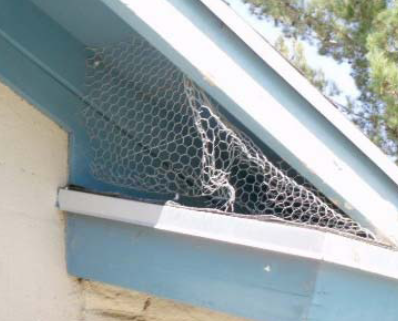
Fig. 7. Wire netting helps to keep birds and rodents out, but needs to be monitored and maintained.
- Gutters and window wells. Clean out window wells, clogged drainage gutters and downspouts to ensure they are properly functioning.
- Crawl spaces. These spaces under houses are attractive to many pests such as widow spiders, scorpions, feral cats, and rodents. These larger animals may create further insect and health problems (e.g., fleas, ticks, etc.).
Read more about many of the above listed techniques, collectively referred to as “pest-proofing” in the University of Arizona Cooperative Extension publication “Pest-proofing your home”, available here:
az1677-2015
Upcoming Events
Save the Date: April 28th, 2020, Tuesday, 7:30am - 5:00 pm. 3rd Arizona School IPM Conference. Carl Hayden Community High School, 3333 W Roosevelt St, Phoenix, AZ 85009. Details coming soon!
The Arizona School IPM Conference is a great opportunity for continuing education, professional development and awareness building; a day of engaging presentations and hands-on activity, for all persons involved with schools, childcare and similar facilities in Arizona; and anyone with an interest in ensuring safe, healthy learning and working environments. There will be separate tracks for indoor and outdoor environments. Listen to talks by experts on various aspects of school IPM, share your experiences and questions with your peers, discuss strategies and find solutions to pest issues your school is facing. Give feedback on topics you would like to see in future events.
Check out upcoming Integrated Pest Management Webinars at https://www.epa.gov/managing-pests-schools/upcoming-integrated-pest-management-webinars
For more information about the EPA Schools program, visit: http://www.epa.gov/schools/
To view all our previous newsletters, visit: https://acis.cals.arizona.edu/community-ipm/home-and-school-ipm-newsletters
Acknowledgements
This material is in part funded by the National Institute of Food and Agriculture, U.S. Department of Agriculture, under award number 2017-70006-27145 that provides Extension IPM funding to the University of Arizona. Additional support is provided by the U.A. – Arizona Pest Management Center.

